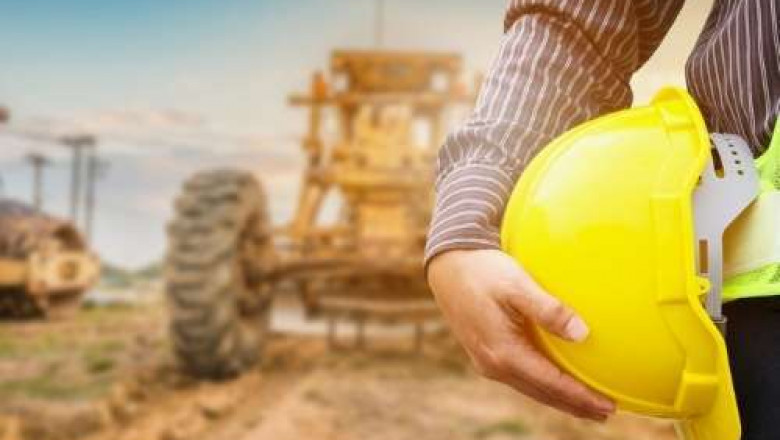views
The construction industry has long been associated with physically demanding tasks, high-risk environments, and a consistent push for improved safety standards. Despite significant progress in regulations and training, injuries and fatalities still occur at an alarming rate across construction sites worldwide. As technology continues to evolve, one promising development stands out in the realm of workplace protection—wearable safety devices. These cutting-edge tools are poised to revolutionize how we approach health and safety in construction, offering real-time monitoring, early warning systems, and data-driven insights that can prevent accidents before they happen.
What Are Wearable Safety Devices?
Wearable safety devices are compact technological gadgets worn by workers to monitor physical activity, environmental conditions, and personal health metrics. These devices come in various forms—smart helmets, vests, watches, glasses, and even boots—each equipped with sensors to detect vital signs, posture, fatigue, location, and environmental hazards like gas leaks or high heat levels.
Their goal is simple: to enhance situational awareness, promote proactive intervention, and ensure that health and safety officers and site managers are always informed of potential risks.
A Game Changer for the Construction Industry
Construction sites are complex, fast-paced, and often unpredictable. Traditional safety measures, such as PPE (Personal Protective Equipment), signage, and training, are essential but reactive in nature. Wearable devices, on the other hand, are proactive—they alert workers to risks in real time and record data that can be analyzed to improve site safety practices.
For example, smart vests can detect if a worker has fallen and automatically alert emergency responders. Smart helmets with built-in augmented reality can guide workers through complex tasks or identify dangers in their surroundings. Meanwhile, GPS-enabled wearables can track workers’ movements in real-time, ensuring that they stay clear of hazardous zones.
The Role of Data in Preventing Accidents
Perhaps the most valuable aspect of wearable safety devices is their ability to collect and transmit data. This data can be aggregated and analyzed to spot patterns, identify common hazards, and evaluate how well current safety procedures are working.
Over time, this can lead to a cultural shift within companies—one where safety decisions are backed by hard evidence rather than intuition alone. Employers can predict when and where incidents are most likely to happen and act in advance to mitigate these risks.
Addressing Challenges and Concerns
Despite their promise, wearable safety devices also raise concerns. Privacy is a key issue—some workers may feel uneasy about being constantly monitored. To address this, companies must implement clear policies around data usage, transparency, and confidentiality. Engagement and communication with the workforce are crucial for adoption.
Cost is another consideration. Outfitting an entire construction team with wearable technology can be expensive, especially for small and mid-sized firms. However, as the technology matures and becomes more widespread, prices are expected to drop. More importantly, the potential savings in accident-related costs, insurance premiums, and legal liabilities can outweigh the initial investment.
Case Studies and Early Adoption
Several companies and projects across the UK have already started integrating wearable safety devices into their operations. For instance, a major contractor in Health and Safety in Surrey piloted smart helmets on a high-rise project, resulting in a 30% reduction in near-miss incidents. In Health and Safety in Hertfordshire, a regional housing developer introduced biometric wristbands to monitor worker fatigue, significantly improving alertness and reducing errors.
These examples show that wearable devices are more than a tech trend—they are a practical, effective solution to real-world safety problems.
The Future of Wearable Safety in Construction
As artificial intelligence (AI), Internet of Things (IoT), and machine learning continue to evolve, the capabilities of wearable devices will only grow. In the near future, we could see fully integrated systems where wearables communicate with site equipment and vehicles, automatically adjusting operations based on worker location and condition. Imagine a crane that halts if a fatigued worker is detected in its radius or a ventilation system that adjusts airflow based on a worker’s oxygen levels.
In the longer term, wearable safety tech could become a standard requirement on all construction sites, much like hard hats and high-visibility jackets today. Regulatory bodies may also begin incorporating these tools into compliance frameworks and safety certifications.
Conclusion
Wearable safety devices are transforming the construction industry's approach to health and safety. By delivering real-time insights, predictive analytics, and immediate alerts, they empower workers and managers alike to make safer, smarter decisions. While challenges around cost and privacy must be managed carefully, the potential benefits in accident reduction, operational efficiency, and workforce morale are too significant to ignore.
As the industry continues to modernize, wearable technology is not just the next big thing—it is the next necessary step toward safer construction sites for everyone involved.














Comments
0 comment